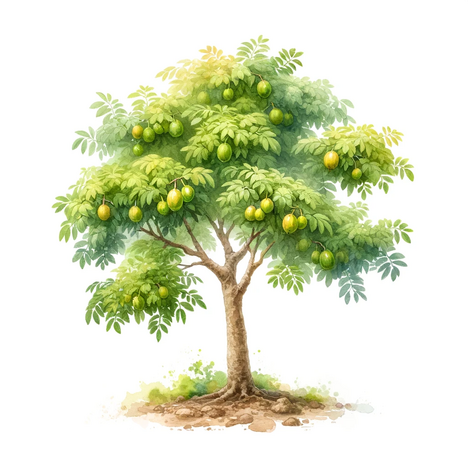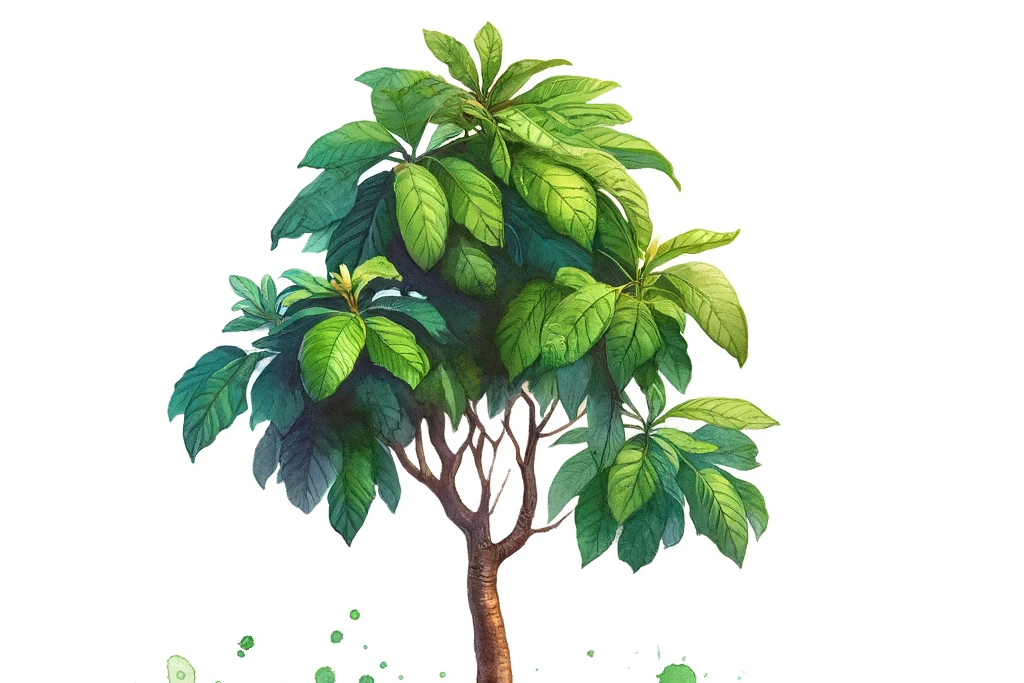Marula tree

What is Marula tree?
Marula tree (Sclerocarya birrea) is a medium-sized tree found in the savannahs and dry forests of Africa. It belongs to the sumac family and has gray, cracked bark, shiny leaves and yellow flowers. The fruits of the marula tree are greenish-yellow, round and about the size of a plum. They have a sweet, sour taste and contain a lot of vitamin C. The fruits are eaten by humans and animals, especially elephants, who shake them off the tree. The fruits are also used to make the well-known marula liqueur, which has a high alcohol content.
What are the benefits of marula tree for your dog?
Marula tree has some health benefits for your dog based on its ingredients. The fruits are rich in antioxidants, which can boost the immune system and protect against free radicals. They also have anti-inflammatory properties that can help with skin problems, arthritis or allergies. The seeds of the fruit contain oil that is rich in omega-3 and omega-6 fatty acids. These are important for the health of the skin, coat, heart and brain. The oil can also be used as a care product for dry or cracked paws.
What are the disadvantages of marula tree for your dog?
Marula tree is not without risks for your dog. The fruit can cause diarrhea or vomiting if consumed in excess, as it contains a lot of sugar and acid. They can also ferment alcoholically if left too long or in the sun. This can lead to alcohol poisoning in your dog, which can be life-threatening. The seeds of the fruit are very hard and can lead to broken teeth or intestinal obstruction if your dog chews or swallows them. You should therefore only give your dog ripe fruit that you have removed the seeds from beforehand.
How can you feed your dog marula tree?
If you want to feed your dog marula tree, there are a few things you should bear in mind. Firstly, you should only use fresh or dried fruit that has not been fermented. Secondly, you should cut the fruit into small pieces or puree it and only give it as a treat or supplement to the normal food. The amount should not make up more than 10% of your dog's daily calorie intake. You can use the oil from the seeds as a food supplement or care product, but here too you should adjust the dosage to your dog's weight.
Marula tree is an exciting ingredient for your dog that can bring him many health benefits. But as with everything, the dose makes the poison. If you stick to the recommended amounts and pay attention to the quality of the fruit, you can offer your dog a tasty change.
If you notice any signs of hypersensitivity or poisoning in your dog, you should see your vet immediately. We are not a substitute for a vet, but we try to be as accurate as possible. Every dog reacts differently and we recommend you get a second opinion or consult your vet if in doubt.
Stay healthy and take good care of your four-legged friend!😊
Similar to Marula tree
Baobab is the name of a genus of nine species of deciduous trees from the mallow family. The best known is the African baobab tree (Adansonia digitata), whose name is derived from the Arabic "bu...
The mango, known for its sweet taste and juicy texture, is a popular fruit with many people around the world. But what about our four-legged friends? Before we dive into the specific components of...
When it comes to feeding our dogs, we are always on the lookout for healthy and nutritious options. Avocado, rich in vitamins, minerals and healthy fats, may seem like an attractive choice at first...
The olive tree belongs to the olive tree family (Oleaceae) and is one of the oldest cultivated plants in the world. It originally comes from the Middle East and was cultivated in the Mediterranean...



